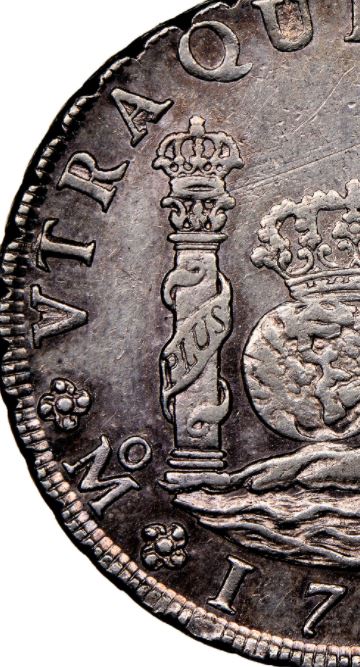What does “$” really mean anyway? Now, before you nominate this question for consideration to be one on the, top ten of the stupid questions list, consider this first. Anyone old enough to be reading this has always been taught to interpret this set of scribbles as the sign denoting “The American Dollar.” Would you be surprised to learn that Mexico and other countries use the same symbol for their relative currencies? "How dare they," you ask? Leveraging the “USA” branding perhaps to garner the acceptance of their currencies by the local disporia? Maybe it was some universal culture shift to the homogenization of currency naming? Or perhaps, a plot by the One-World - One Currency economic liberation front? Sorry, but, it is nothing that exciting folks. It all comes back down to the socio-economic needs of the masses which, some are literate and some are not. Speaking the same language, or not, needing a way to put food on the table. You know, that innate relentless drive of people up the Maslow’s hierarchy that we are all hard-wired to be commanded by? Now that’s a topic for another article, so let’s just leave that be.
Imagine you are an early American Wholesale Merchant. You’re looking at your sales and trying to figure out a way to make more money (spoiler alert – accounting preceded technology). You decide that having something fresh, new or that would appeal to the ladies, would be a great way to accomplish higher sales. One such way merchants would “find-things” was to take their wagons to very well-defined border trading areas (think: trading posts) to see what wares the natives in that area had to offer. After seeing something they liked, the merchants would offer to purchase it. This is not back country commerce; we are well past the wampum days here. These people wanted hard cash and in a country that did not have its own money (U-S- of A for those not following) from the time of European annexation of the Americas to the late 1700’s, a period of almost 300 years, something had to be used to facilitate the flow of goods and services. Well, that has turned out to be an entire bunch of somethings. It was not uncommon to have many different types of money in the “chest-wallet” you kept in the back of your wagon to pay for such things. You could have English, Spanish, French or Dutch (to name a few) coinage, requested or presented to you, in the negotiation of said goods. So, just like today, people had a preference in the money they got back in change. Imagine going to Target and paying with your purchase using a US $100 bill and they give you change in Pesos? Unimaginable right? However, it wasn't then. Anything was on the table and people just needed a way to differentiate those different currencies in the negotiation process. For example, those are some great pelts and I would be willing to pay 10 Pesos for them, but certainly not 10 Crowns. So, while I get you are holding up 10 fingers, what currency of 10 is that in again? So, what people eventually did was learn to draw/write the symbol of the currency they were negotiating in and (remember Columbus was from Spain) using the “$” to be the symbol for the Spanish 8 Reales. Why that symbol and the Reales?
The Reales (translation Royal) specifically the Spanish 8 Reales coins (Reales de ocho) as they were named and produced from about the mid 14th century up to 1864, is the coin that became the new world standard. More commonly known as “pieces of 8”, in the old pirate movies where it was the booty in the chests the pirates were always burying on some remote island. The fact that these silver coins where widely accepted as universal currency through-out Europe, Asia and even America and all through-out the highs and lows of the Spanish Empire, it didn’t hurt the fact that we wanted them too.
Even after the US started minting its own dollars in 1794, the 8 Reales coin continued to circulate largely and freely in this and many countries. We just differentiated it by adding the word “Spanish” in front of dollar to get “Spanish Dollar." In fact, the Spanish Dollar was legal tender through-out the United States until the coinage act of 1857. The term “pieces of 8” refers to dividing (literally chopping) an 8 Reales coin into 8 individual pieces of silver to either pay for or as change in the interlude for goods and services. Imagine bellying up to the local tavern for a pint that might cost 2 Reales (approximately 25 Cents) and the bar tender or patron reaches for a big pair of sheers or an ax to literally chop their 8 Reales coin into pieces to make change. Hollywood Westerns are full of scenes of the thirsty cowhands ponying up to the bar and being charged “2 bits” (2 Reales, or 25C) for a drink at the bar. This coin WAS the early American West!
So, let’s look at one shall we?

